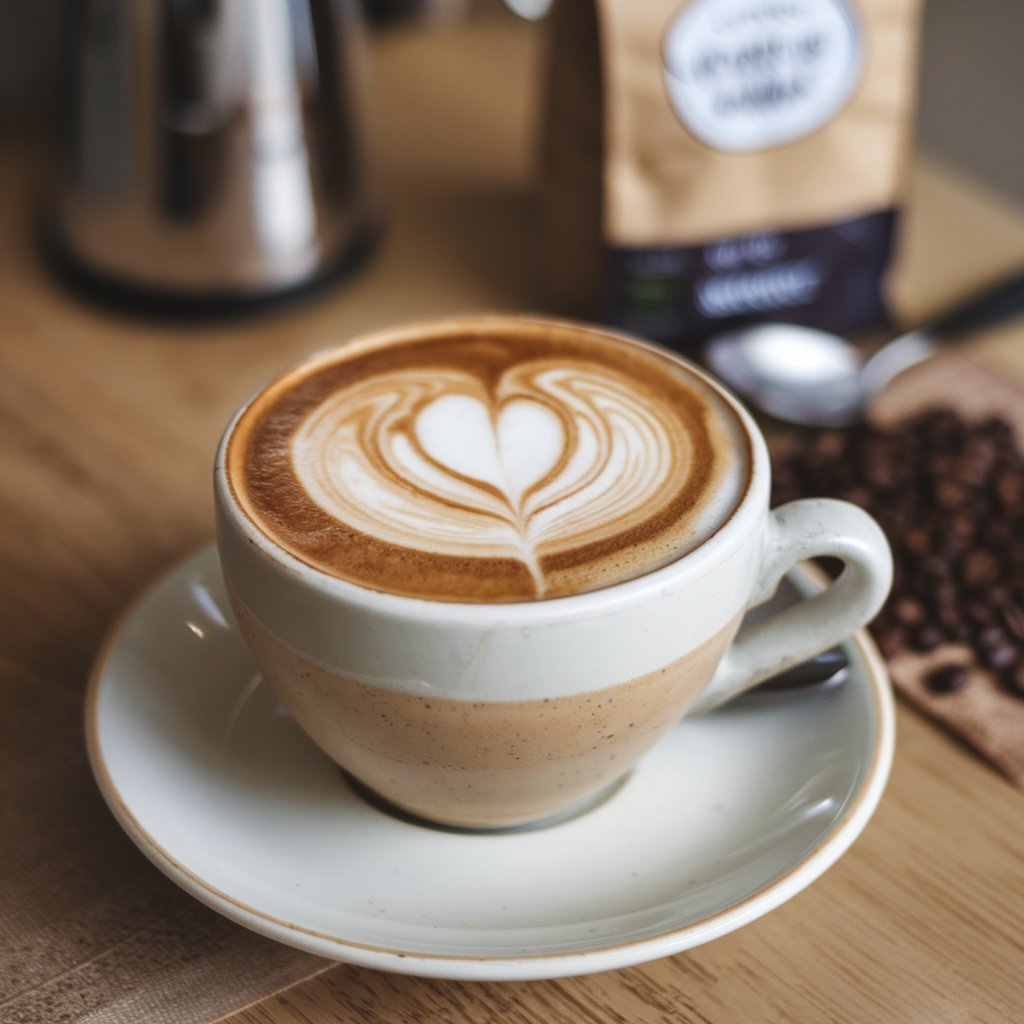If you’re a coffee lover, a well-crafted Creamy Cappuccino can be pure magic. The rich texture, the balance of espresso and frothy milk, creates a sublime experience.
Imagine recreating that cafe-quality cappuccino right in your kitchen. This guide shows you how to make a dreamy, creamy cappuccino at home, with simple steps and few tools.

What is a Cappuccino?
A cappuccino is a traditional Italian coffee drink made with equal parts espresso, steamed milk, and milk foam. The luxurious foam layer is what sets it apart from other coffee beverages, giving it a creamy texture and balanced flavor. Typically served in smaller cups (6-8 oz), a cappuccino offers a more concentrated and velvety experience compared to a latte.
Ingredients for the Perfect Creamy Cappuccino
To start, you’ll need espresso (1 shot or about 1 oz). Freshly brewed espresso is ideal, but strong coffee from a Moka pot or French press can also work.
You’ll also need 4-6 oz of whole milk for a rich texture, although oat, almond, or soy milk can be used as dairy-free alternatives. Optional ingredients include sugar or sweeteners, and a pinch of cinnamon or cocoa powder for garnish.
Tools You’ll Need
An espresso machine is ideal, but any coffee maker that brews strong coffee will suffice. You’ll also need a milk frother or steamer to create the frothy texture.
A thermometer can be useful to ensure your milk reaches the right temperature, and a cappuccino cup (around 6 oz) completes the experience.

Step-by-Step Guide to Making a Creamy Cappuccino
Begin by brewing the espresso. Use high-quality, freshly ground coffee beans for the best flavor. Brew a single shot of espresso (about 1 oz). If you lack an espresso machine, a Moka pot or French press brewing strong coffee will work. Aim for about 1 oz of concentrated coffee.
While your espresso brews, heat the milk. Pour 4-6 oz of milk into a small pitcher and heat over medium heat to around 150°F (65°C). If you don’t have a thermometer, the milk should be hot to the touch but not boiling. Froth the milk until it doubles in volume.
Once both the espresso and milk are ready, pour the espresso into a cappuccino cup. Slowly add the steamed milk over the espresso, holding back foam with a spoon. Spoon the frothy milk foam on top of the cappuccino until the cup is full.
For a final touch, sprinkle a pinch of cinnamon or cocoa powder on top of the foam. This enhances the flavor and gives a professional finish. Now, sit back, relax, and savor your creamy homemade cappuccino!

Tips for Making the Best Cappuccino
Using fresh, quality coffee beans is crucial. Choose freshly roasted, high-quality coffee beans for the best flavor. Arabica beans are smoother and more flavorful, while a blend of Arabica and Robusta creates a richer crema.
Investing in a good milk frother can make a world of difference. While frothing milk without fancy equipment is possible, a steam wand or electric frother creates velvety foam effortlessly.
Mastering milk temperature is essential. Milk too hot will scald, and milk too cold won’t froth properly. Aim for 140-160°F (60-70°C) for perfect foam without losing creamy texture.
Experiment with flavors once you master the basic recipe. Add vanilla extract, caramel syrup, or hazelnut syrup for a fun twist. For a holiday vibe, try pumpkin spice or peppermint syrup.
Nutritional Information
A standard 8 oz cappuccino with whole milk and no added sugar generally contains: 80 calories, 4 grams of fat, 6 grams of carbs, and 4 grams of protein.
Dairy-free alternatives like almond or oat milk have fewer calories and fat. However, they may contain added sugars, so check the label if you’re mindful of intake.
Dairy-Free and Vegan Alternatives
Lactose intolerant or on a plant-based diet? You can still enjoy a creamy cappuccino!
Great non-dairy milk options include oat milk (creamy and neutral), almond milk (light, nutty flavor), soy milk (froths nicely, mild flavor), and coconut milk (rich, tropical twist).
Choose barista versions of non-dairy milk designed for frothing. These options contain stabilizers that create thicker, creamier foam.

Troubleshooting Common Cappuccino Mistakes
Encountering challenges is normal even for seasoned baristas. Here are common issues and fixes:
Weak or bitter espresso? Wrong grind size or brew time may be the cause. Use fine grind and brew for 25-30 seconds for optimal flavor.
Flat milk foam? It could be due to incorrect milk temperature. Aim for 150°F and use a barista-quality milk frother. Too much milk can dilute and overpower the espresso. Stick to 4-6 oz for balance.
Frequently Asked Questions
Can you make a cappuccino without an espresso machine? Yes! Use a Moka pot or French press to brew strong coffee. It won’t have the exact espresso flavor but will still be delicious.
What’s the difference between a cappuccino and a latte? Cappuccinos have equal parts espresso, steamed milk, and foam. Lattes have more milk and less foam, resulting in a creamier, less intense drink.
Can flavored syrups be used in cappuccinos? Absolutely! Add vanilla, caramel, hazelnut, or any other syrup to customize your cappuccino.

Final Thoughts: Why Make Cappuccinos at Home?
Making creamy cappuccinos at home is rewarding and saves money. Customize your coffee to your liking with a few simple ingredients and tools.
Enjoy a barista-worthy drink in the comfort of your kitchen. Next time you’re craving a coffeehouse cappuccino, make your own. It’s easy and satisfying!
Crafting your cappuccino provides a delightful coffee experience at home.
Follow these steps to enjoy a rich, creamy cappuccino any time, right from your kitchen.




[…] for both coffee enthusiasts and newcomers, this drink offers a visual and flavorful experience. Whether […]